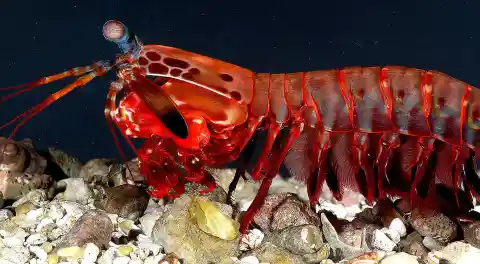This past summer saw the United States’ East coast being plagued by more shark attacks than ever before. There couldn’t possibly be any other animal in the ocean more intimidating or dangerous than sharks, right? Wrong. Meet the mantis shrimp. They may look like the progeny of a rainbow and a spindly lobster, but beneath that flamboyant exterior hides a beautiful death trap. Here are five reasons mantis shrimp are awesomely terrifying.
Number Five: Their Eyes See More Color Than Yours. Our human eyes have three types of color receptive cones, enabling us to see red, blue, and green. Every color we can distinguish is a composite of these three colors. Impressive, right? Well, mantis shrimp have 16 types of color receptive cones. Twelve of those are for seeing color, and the other four are for color filtering. That means they see nine more “primary” colors than we do—imagine the possibilities!
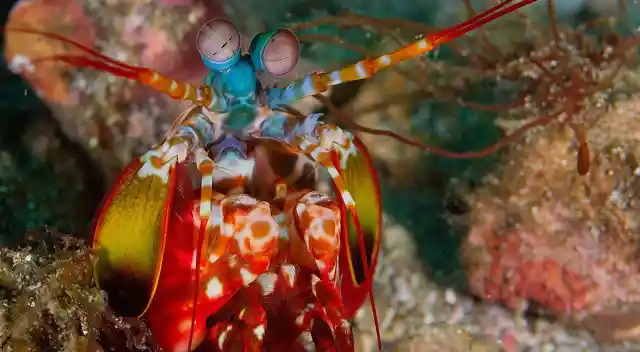
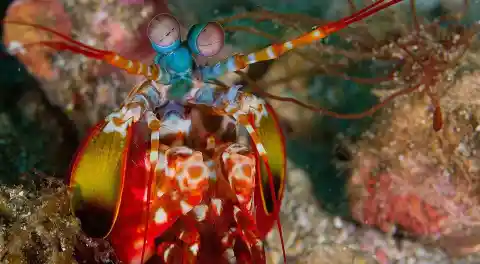
Number Four: They Do Monogamy Better Than Most Humans! In the species that have displayed monogamy, the mantis shrimp remains with the same partner for up to 20 years! They essentially move in together, too, by sharing the same burrow, interacting with the same neighboring animals, and coordinating activities, such as taking care of the eggs. In some species, the female will lay two clutches of eggs, and the male will tend to one while the female tends to the other. In others, the female will stay with the eggs, and the male will hunt for both of them.
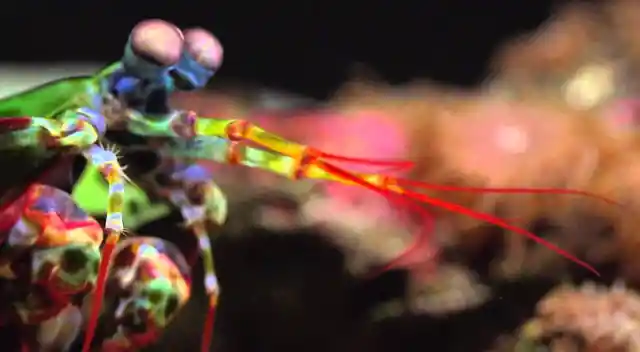
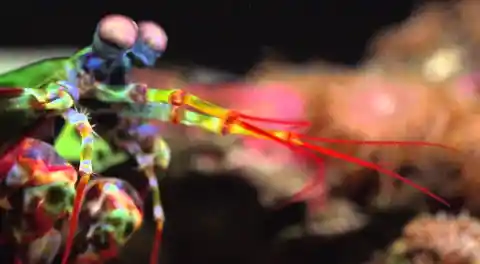
Number Three: Skewer-Spear Hands. The spear type of mantis shrimp is the most common type. Though structurally similar, the spear types of mantis shrimp have frontward-facing scoping claws. They can be anywhere from a few centimeters long, such as Alachosquilla vicina, to nearly 10 times that length, like Lysiosquillina maculate. These shrimp are ambush predators. They lie in wait for soft flesh animals that swim by their burrows.
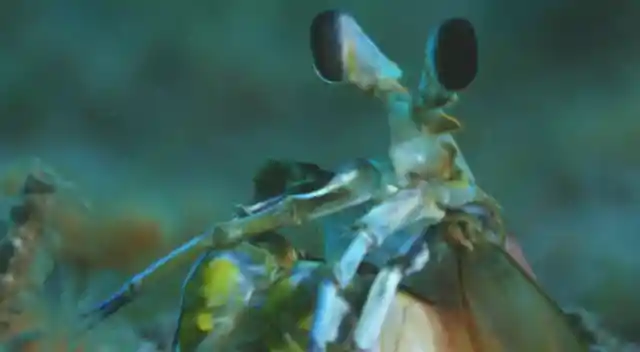
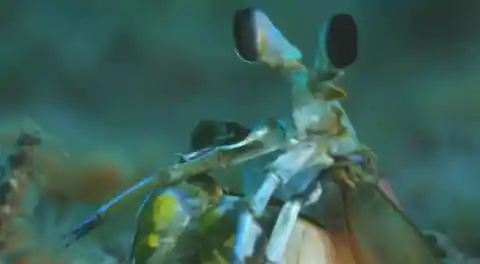
Number Two: They Are Too Dangerous For Aquariums. Some saltwater aquariums keep these guys in captivity, especially the peacock mantis due to its colorful markings. But others consider them harmful pests. They cannot share space with other species in a tank, as they are voracious eaters and will stuff themselves until there is nothing left. The larger species have even been known to break aquarium glass by punching it! When they get bored with their established burrows, they can damage living rock and coral to make a new home.
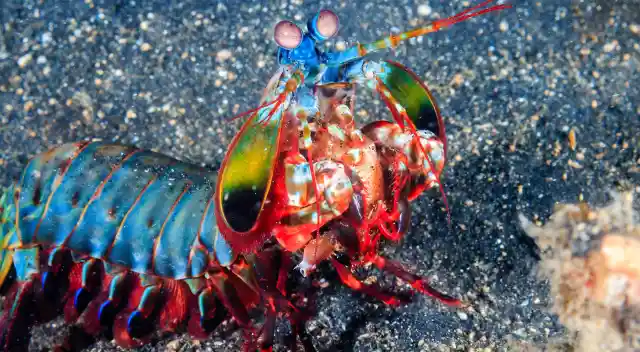
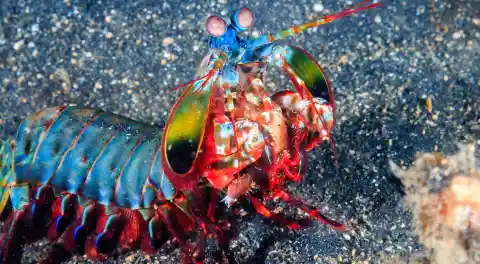
Number One: Smasher Bowling Ball Hands. Arguably the most well-known species, the colorful peacock mantis shrimp (Odontodactylus scyllarus), are just what the name suggests. At the end of their claw/arm appendages are club-like fists. Though they also have burrows, they are not ambush predators. Instead, they leave their burrows and go in search of sedentary, hard-shelled prey. Next, they beat them with their bowling ball appendages to expose the soft fleshy interior, and that is what they eat. In order to break shells, these guys can punch up to speeds of 50 mph, and their claws accelerate so quickly they can strike prey with 1,500 Newtons of force. This is so fast that the water around them boils in a process called supercavitation, and when the bubbles collapse it emits shockwaves and a tiny burst of light. They can kill prey even if they miss!

